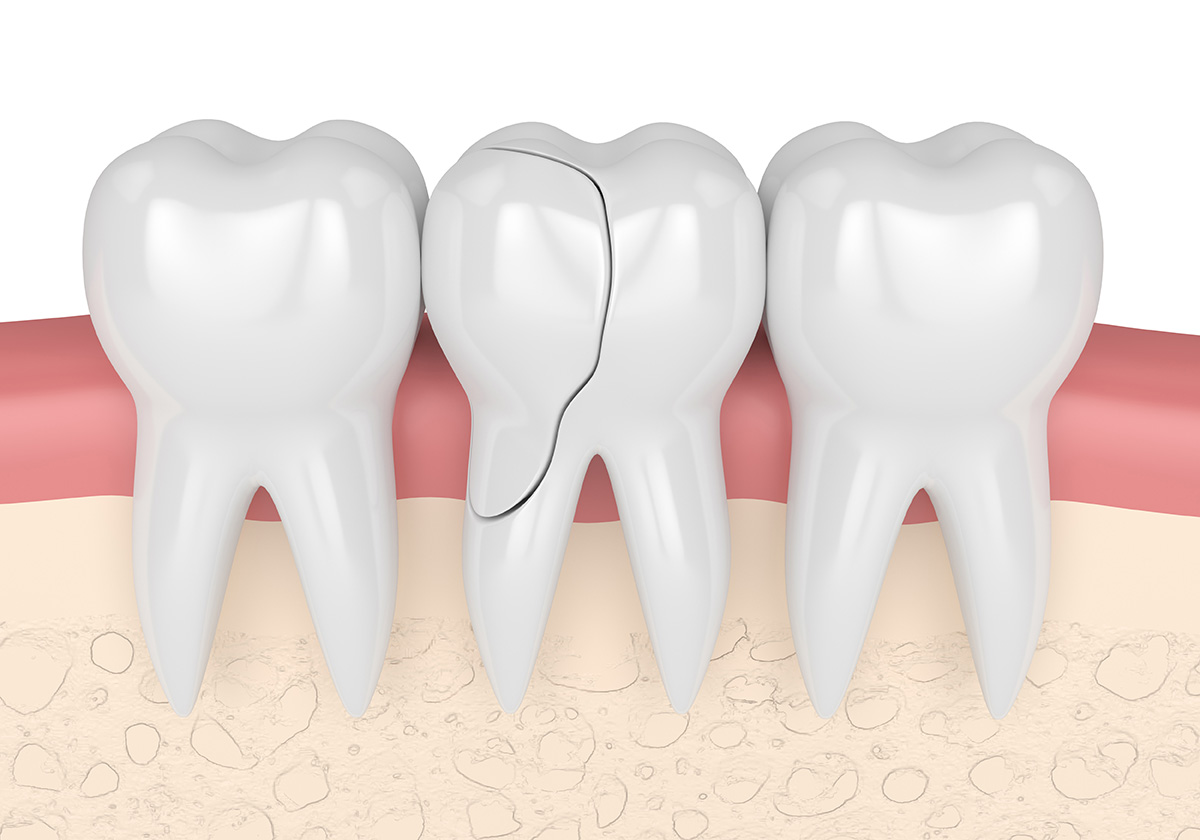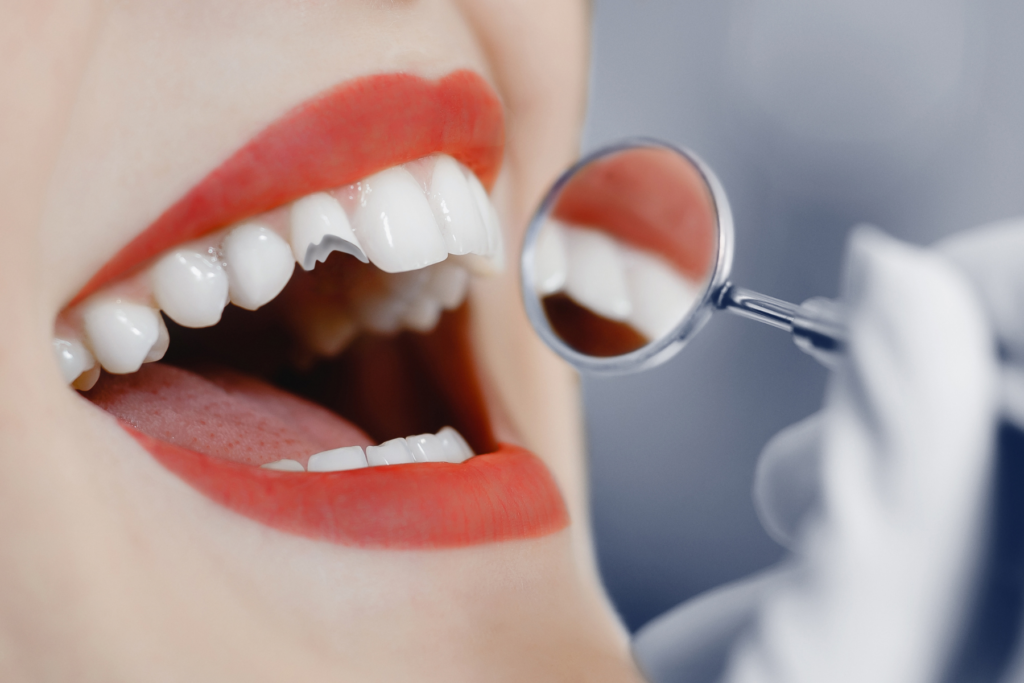Dental emergencies can strike at any moment, leaving us in throbbing pain and discomfort. A broken tooth is one such unwelcome surprise that can disrupt our daily lives and cause significant discomfort. However, with prompt attention and proper care, it is possible to repair a broken tooth effectively, restoring both its functionality and aesthetics. This comprehensive guide will navigate you through the process of fixing a broken tooth, providing crucial information and actionable tips to ensure a pain-free and successful recovery.

Image: greeleydental.com
Understanding Broken Teeth: Types, Causes, and Symptoms
A broken tooth occurs when a portion of the tooth structure sustains damage or fractures. This damage can vary in severity, ranging from a minor chip to a complete break. Common causes of broken teeth include:
- Trauma to the mouth, such as a blow or fall
- Chewing on hard objects, like ice or candy
- Underlying tooth decay that weakens the tooth structure
- Grinding or clenching teeth (bruxism)
Symptoms of a broken tooth can vary depending on the extent of the damage. They may include:
- Pain while chewing or biting
- Sensitivity to hot or cold temperatures
- Discomfort or pain when touching the affected area
- Visible chipped or broken tooth enamel
Seeking Professional Assistance: Why Prompt Treatment Is Essential
If you suspect you have a broken tooth, it is imperative to seek professional dental care as promptly as possible. A dentist can accurately assess the severity of the damage, determine the best course of treatment, and provide effective pain relief. Delaying treatment can lead to further complications, including:
- Infection of the tooth pulp
- Damage to the surrounding teeth and gums
- Loss of the broken tooth
Treatment Options for Broken Teeth: Restoring Form and Function
Depending on the extent of the damage, there are various treatment options available for broken teeth. Your dentist will recommend the most suitable method based on your individual case:

Image: www.medfordsmiles.com
Composite Bonding
This procedure involves applying a tooth-colored resin material to the damaged area. The resin is sculpted and hardened to restore the tooth’s shape and integrity. This option is suitable for minor chips and fractures.
Dental Crown
A dental crown is a tooth-shaped cap that fits over the broken tooth, restoring its strength and appearance. Crowns can be made fromさまざまなmaterials, such as porcelain, ceramic, or metal. They are used to repair more extensive damage, such as large chips or cracks.
Dental Veneer
Veneers are thin porcelain shells that are bonded to the front surface of a broken tooth. They can improve the aesthetics of the tooth and protect it from further damage. Veneers are typically used to treat minor chips and fractures that affect the visible portion of the tooth.
Root Canal Treatment
If the damage extends to the tooth pulp (the innermost part of the tooth), root canal treatment may be necessary. This procedure involves removing the damaged pulp and sealing the canals to prevent infection and further complications.
Pain Management: Navigating Discomfort During Treatment
Understandably, dental procedures can cause some level of discomfort or pain. However, advancements in dental technology have significantly reduced the pain associated with fixing broken teeth. Your dentist will administer local anesthesia or use other pain management techniques to minimize discomfort during the treatment.
Over-the-Counter Pain Relievers
In addition to pain medication prescribed by your dentist, over-the-counter pain relievers, such as ibuprofen or acetaminophen, can help manage post-operative discomfort. Follow the instructions on the medication label carefully regarding dosage and timing.
Cold Compress
Applying a cold compress to the affected area can help reduce swelling and discomfort. Wrap an ice pack or a bag of frozen vegetables in a towel and apply it to the cheek or jaw near the broken tooth. Hold for 10-15 minutes at a time, repeating as needed.
Salt Water Rinse
Gently rinsing your mouth with warm salt water can help clean the area around the broken tooth and reduce inflammation. Dissolve half a teaspoon of salt in a cup of warm water and swish for 30 seconds. Repeat several times a day, especially after meals.
Prevention Tips: Protecting Your Smile from Broken Teeth
While accidents can happen, following these preventive measures can help reduce your risk of breaking a tooth.
- Wear a mouthguard when playing sports or engaging in activities that may result in a blow to the mouth.
- Avoid chewing on hard objects, such as ice, candy, or popcorn kernels.
- Practice good oral hygiene habits, including regular brushing and flossing, to prevent tooth decay and weaken the tooth structure.
- Visit your dentist regularly for checkups and professional cleanings to detect and address potential problems early on.
- If you notice any signs or symptoms of a broken tooth, such as pain or sensitivity, seek professional dental care promptly.
How To Fix Broken Tooth
Conclusion: Restoring Your Smile with Confidence
Fixing a broken tooth is a multifaceted process that requires prompt professional attention and a combination of treatment options. By understanding the causes and symptoms of broken teeth, you can make informed decisions about your oral health. Seeking prompt dental care can help mitigate pain, prevent complications, and restore your smile’s functionality and aesthetics. Remember, maintaining good oral hygiene, being mindful of your dietary choices, and visiting your dentist regularly can significantly reduce your risk of experiencing dental emergencies.